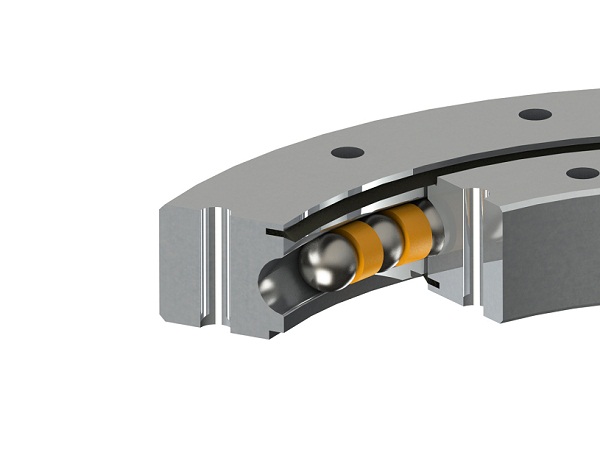There are many classifications of slewing bearings, each type has different characteristics, and the scenarios used are also different. You may not be very clear about the selection type. Generally, the selection type should be considered: slewing accuracy, bearing capacity, working temperature, In terms of running speed, etc., let’s take a look at the specific method with the slewing bearing manufacturer~
Classification of slewing bearings

1. Three-row combined roller slewing bearing
The three-row roller slewing bearing has the upper and lower and radial raceways of the three races separated, so that the load of each row of rollers can be accurately determined. It can bear various loads at the same time, has a firm structure, and has large shaft and radial dimensions. It is suitable for heavy machinery requiring large diameters.
2. Double row angular contact ball slewing bearing
The double-row ball slewing bearing has three races, and the steel balls and spacers can be directly discharged into the upper and lower raceways. According to the stress conditions, two rows of steel balls with different diameters are arranged. The axial and radial dimensions of the double-row ball slewing bearing are relatively large, and the structure is firm, especially suitable for machinery that requires a medium or larger diameter.
3. Single row cross roller slewing bearing
The single-row cross-roller slewing bearing is composed of two races, with compact structure, high manufacturing precision, light weight, small assembly clearance, and can bear axial force, large radial force and tipping moment at the same time.
4. Single row four-point contact ball slewing bearing
The single-row four-point contact ball bearing slewing bearing is composed of two races, with compact structure, light weight, four-point contact between the steel ball and the arc raceway, and can bear axial force, radial force and tipping moment at the same time.
…
Details can be accessed by clicking here:https://www.ldb-bearing.com/ldb-bearing-knowledge/slewing-bearing-classification.html



